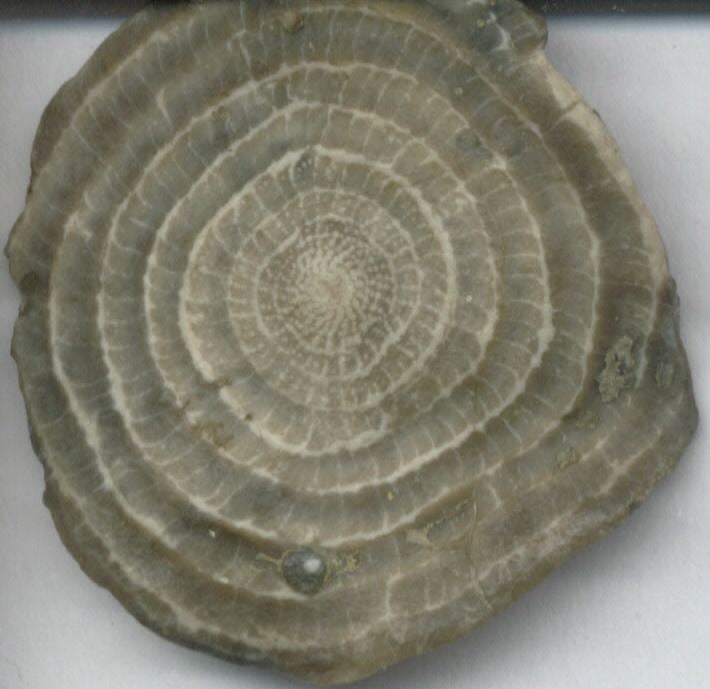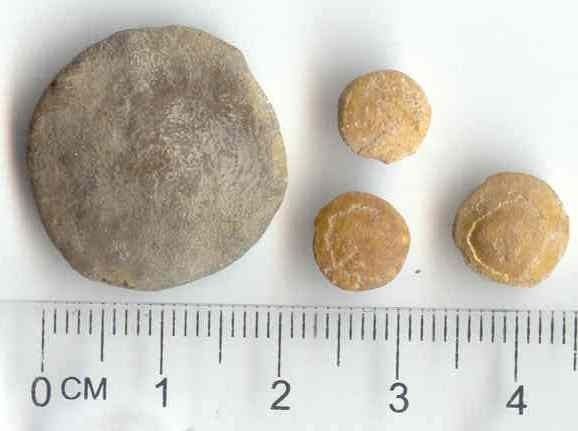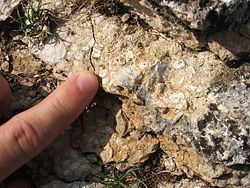Domain Eukaryota Superfamily Nummulitacea | Phylum Retaria Family Nummulitidae | |
 | ||
What does nummulite mean
A nummulite is a large lenticular fossil, characterized by its numerous coils, subdivided by septa into chambers. They are the shells of the fossil and present-day marine protozoan Nummulites, a type of foraminiferan. Nummulites commonly vary in diameter from 1.3 cm (0.5 inches) to 5 cm (2 inches) and are common in Eocene to Miocene marine rocks, particularly around southwest Asia and the Mediterranean (e.g. Eocene limestones from Egypt). Fossils up to 6 inches wide are found in the Middle Eocene rocks of Turkey.2 They are valuable as index fossils.
Contents

The ancient Egyptians used nummulite shells as coins and the pyramids were constructed using limestone that contained nummulites. It is not surprising then that the name "Nummulites" is a diminutive form of the Latin nummulus meaning "little coin", a reference to their shape.

In 1913, naturalist Randolph Kirkpatrick published a book, The Nummulosphere: an account of the Organic Origin of so-called Igneous Rocks and Abyssal Red Clays, proposing the unconventional theory that all rocks had been produced through the accumulation of forams such as Nummulites.

Nummulite how to pronounce it

